Disembarking at Paddington, we strolled south until I recognized Whittard Teashop, tucked inside a historic redbrick building, circa 1900. It had its own two-faced clock. (Many buildings in London feature exterior clocks for the punctual population). We entered. Family-owned from 1886 until 1973, the company is now an international chain of 120 teashops and teahouses. As in China, a teashop sells packaged tea, but a teahouse (tea room) is an eatery where you stay and sip tea with food and sociable friends.
We were pleased to see a young clientele interested in healthy teas. The shopgirl was knowledgeable but not pushy for profits. We liked that. The spiffy shop was bright, easy-to-navigate, and lined with free samples. Despite the main offerings being tea and coffee, Lewis was drawn to a Sticky Toffee Pudding-flavored hot cocoa, which is what we purchased!
Farther south, we arrived at Fortnum & Mason precisely on time to video-record its mechanical clock chime for 3 o'clock! The two characters are the namesakes: Mr. Fortnum and Mr. Mason.
Recognizing their unwavering excellence, the company was awarded a Royal Warrant by the Queen (as a top-tier Grocer & Provision Merchant). Later, the Prince of Wales bestowed his Royal Warrant (as a top-tier Tea Merchant & Grocer).
In a kingdom (or a country that is ruled by a noble sovereign), Royal Warrants are awarded to businesses/tradesmen to honor their excellence. The tradition began in 1155. In the United Kingdom, if the business maintains superb service to a royal household for five years, they are officially titled as Purveyors to the Royal Household. The monarch decides who can be grantors of Royal Warrants. Currently, the Queen and her eldest son are grantors. Until his death, the Queen's husband was a grantor. The Queen Mother was also a grantor, but her warrants expired five years after her death.
Such matters are governed by the Lord Chamberlain. By Royal Decree, recipients are allowed to brandish the warrants and Royal Coat of Arms on their businesses.
Sometimes, a business earns multiple Royal Warrants.
Such prestigious publicity is a "dream come true" for businesses who can advertise that they supply a Royal Court. F&M proudly prints it on the back of their receipts.
Eagerly, we entered to explore this iconic store.
We experienced nicer service from the employees on the main and lower levels. Despite wearing masks, we could sense their smiles, and they exuded helpfulness and attentiveness. Seen above, Lewis chose 10 handmade chocolates: £1 each. They had marvelous flavors: violet and rose were our favorites, but the whiskey ones were tasty, too. Seen below, Lewis loves marzipan, and he was enticed by the sizable hand-painted ones that resembled foods. He bought a £5 corn-shaped one.
He also bought a box of assorted marzipans for £20. (In the USA, the cheapest package of plain marzipan = $30, so we thought it was a bargain at F&M, but later we visited Waitrose & Partners and saw a package of plain marzipan for £2!)
We were delighted to discover the brand of Highgrove, created by organic ingredients grown sustainably at Highgrove House, the estate of Charles and Camilla as the Duke and Duchess of Cornwall. Prince Charles bought the estate in 1980. As a fan of hands-on small-batch methods, His Royal Highness ensures that ethically and environmentally-conscious ones are used. Rare trees are matured, seeds are spread, heritage-breeds are nourished, compost is made, and biomass heaters are used.
They are scrumptious!!!
*As the Crown Prince, Charles has a historic title: the Prince of Wales. In 1301, King Edward I conquered Wales and began the tradition of bestowing the princely title on the heir-apparent. (Similarly, in the Netherlands, the crown princess is the Princess of Orange). The Queen conferred it on him in 1958. In addition, he inherited the title of Duke of Cornwall, as soon as his mother became Queen, upon the death of his grandfather in 1952. In 1337, Good King Edward III began the tradition of giving the ducal title to his eldest son, and he created the Duchy of Cornwall as a financial endowment for every heir henceforth. I'll describe that duchy soon.
After going down the sleek spiral staircase, we found wine, oils, terrines, rillettes (I wanted venison, but Lewis chose chicken), and showcases of prepared foods. The counter-person heated up our selections, and we lunched at nearby tables.
Since F&M created the Scotch Egg recipe in 1738—and it is something that Lewis and I greatly enjoy—we tried one. Its runny yolk was as perfect as its crust. It was crammed with flavor! It was marvelous!
We also munched on another English staple: a meat pie made of minced pork. The pastry crust was perfect—indicative of a lovely egg-wash to give it a brown, rich color. Its weight hinted at the filled-to-the-top goodness, which cost £6.
Lastly, we consumed a sausage roll, which was filled from front to back... and delicious!
From there, we headed to the Waitrose & Partners supermarket in Belgravia, near our hotel. Belgravia is a posh neighborhood. Belonging to the 7th Duke of Westminster (whose bloodline goes back to the Norman Conquest)...
...the Grosvenor Estate owns most of Belgravia's 200-acres. (It also owns 100 acres of the ritzy Mayfair neighborhood). That is similar to owning half of NYC's elite Upper East Side.
Our sunny stroll to get there was perfect for digestion.
Anywhere that you find them, Waitrose stores are affordable and presentable. Unlike in America, prices were not higher in Belgravia, as compared to less-costly neighborhoods. That is nice. Founded in 1904, the company was bestowed with Royal Warrants as Grocers & Wine/Spirit Merchants by the Queen and the Prince of Wales. Since 2018, it is a business owned by its employees, who are known as Partners... hence the name. Whatever they sell is produced in sustainable ways, with consideration for animal welfare. They strive to eliminate plastic and use recycled home-compostable packaging.
Look at the affordable prices! Nothing like this is seen in the USA—not even at Trader Joe's. In the USA, if a company got an award, it'd increase its prices. Not so, in the UK. When you live nicely in a nation with Universal Healthcare (instead of for-profit Healthcare), the nation is full of affordable healthy food.
Seen above, they sold meat pies at only £2.75 (much cheaper than F&M). Using a 20-year-old recipe, their pie-makers in Leicestershire include layers of British ham, herb-marinated pork, and rich pork-jelly stock. They also sold wonderfully-thick pieces of pâté-en-croute for only 99-pence! How much is pâté at your local grocer? Probably $6+.
Unlike Americans who crave sugary breakfasts, we prefer natural cereals and savory options. Lewis was ecstatic to see a FULL RANGE of unsweetened cereals—at affordable prices. (American markets only sell a few natural cereals—but at luxury prices of $7-10 per box). In England, healthy cereals are priced fairly. Both sides of the aisle were full of such brands! :-)
It was equally pleasurable to pay for our items. Self-checkout was available in every store—whether a small convenience store, family-run market, or supermarket. More trusting than in the USA, they don't rely on weight-sensing trays; they trust that you will scan/pay for everything you have. In fact, EVERY SINGLE transaction that we had in London (even in Chinatown) was cashless. We never needed to do a currency exchange. Tap-and-go convenience is proof of a truly first-world metropolis.
We went to Waitrose's Japanese-run sushi counter and purchased freshly-made tempura. Lewis also selected a box of dark-rye crackers, a lunch-sized slice of pâté, and drinkable yogurt and kefir.
Lewis and I also popped into a Marks & Spencer Food Market (the company is equally famous for its fair-priced clothing stores) and were wowed by the affordability and huge selection.
The successful chain was founded in 1884.
Unlike most American markets, European (and Japanese) ones sell wine and spirits. One-stop-shopping! Americans cannot imagine buying good-quality wine for 6.50, or only paying 2-bucks for two boxes of cheese sticks. Sadly, in the USA, food that costs one dollar is always full of fructose corn syrup, nitrates, additives, fillers, and bleached/fortified junk.
Outside of the USA, the miracle of fair-priced Good Food abounds! When you hear ignorant people claim that London is expensive, please remember these prices, which prove that it's not; it's less costly than most American cities.
We got a container of tasty prawns (seen above) and a French bottle of rosé wine. We loved how M&S sold individual-sized wedges of English-made Stilton and Cheddar. Few stores in America's biggest city offer such portion sizes (they prefer to make you spend more to buy food that is often wasted), but M&S proved that it's doable and profitable. M&S makes it convenient and accessible to have a snack of British cuisine, which we did. We devoured that tasty cheese = £0.95.
Notice that it was made in Leicestershire: one of only three counties that can produce authentic Stilton, as per the acclaimed Protected Designation of Origin criteria for it. This one from Long Clawson Cheesemaker won "Supreme Champion" at the 2017 Global Cheese Awards! Still, the price is ungreedily fair.
The lack of super-sized foods was a relief for us. I joyfully purchased a rectangular Iced Fruit Cake (totally better and unlike American fruit cake) for merely £2.50.
Harrods is humungous! Just like Selfridges, Illum, Macy's, and De Bijenkorf, it fills an entire block. It looks magnificent in daylight and when illuminated at night.
The UK is clearly participating in the Slow Foods movement. Its citizens understand how detrimental it is.
After putting our edible souvenirs in our hotel room, we hopped aboard the Underground. At Green Park Station (this is what it looks like)...
...we switched onto the Jubilee Line. It's an east-west route created in 1979 and named for Queen Elizabeth's Silver Jubilee (which is why the route is colored silver on maps), marking the 25th anniversary of her reign. Only three other British monarchs reached that jubilee. Blessed with vigor, the Queen reached the milestones of a Golden Jubilee (50 years) in 2002 and a Diamond Jubilee (60 years) in 2012. Only Queen Victoria reigned long enough for a Diamond Jubilee. Next year, Her Majesty is expected to achieve her Platinum Jubilee (70 years). God save the Queen. (That is the Queen's anthem, which is also the national anthem).
*As a boy, my elementary school maintained a weekly ritual of having students sing My Country Tis of Thee. It's America's patriotic song, based on the melody of God Save the Queen. So, I know the tune perfectly.
Crossing under the River Thames, our train paused in the borough of Southwark, and we exited (Tap-and-Go) at London Bridge Station. It is a magnificent railroad hub.
Look at that clean floor: not a wrapper of discarded cup in sight. As it should be. Clearly, without squandering/syphoning funds, their transit system can afford things like this... while capping riders after their third ride and thus not charging any more for that day.
It's a modern mega-station that we couldn't imagine in any of our local cities. Here is what Manhattan's bleak Penn Station (a hub of Amtrak, two commuter trains, and several subways) looks like...
We exited to the street. It was a gorgeous evening. Our position overlooked the riverfront. Across the river, London's only skyscrapers were mostly clustered within the City of London. In the distance, the dome of St. Paul's Cathedral glinted in the sun.
We moseyed to Borough Market, situated under the train trestles and bridges. It stretches over Stoney Street, Middle Road, Green Dragon Court, and Borough High Street. It's worth a visit!
It's one of the oldest marketplaces in the world, with a history of 1,000 years. A millennium! It is not filled with chain-brand (look alike) companies or kitschy souvenir shops. It's an open-air emporium specializing in small-batch purveyors: French & British cheese, charcuterie, loose tea from India, seafood, pilsners, wine bars, seventh-generation oystermen, Singaporean hot pot, Arab pitas, Israeli street food, Malaysian buns, Basque pintxo, Belgian chocolates, Sri Lankan snacks, Alpine chèvre, hand-knitted wool accessories, and hand-whittled woodwork. You can buy freshly-uprooted veggies from Kent, lamb from the depths of the Welsh mountains, and venison sourced from the Windsor Royal Park.
In addition the permanent stalls, local farmers (London has urban farms) set up stands in the courtyard. We arrived when the farmers were going home, but the stalls were still active. Once again, we were impressed that the municipality sent street sweepers to immediately clean the courtyard. Indeed, a first-world nation.
Lewis wanted to dine at Fish Kitchen, which operates a To Go (Takeaway) kiosk, as well as a full restaurant.
The smiley hostess sat us outside, for an al fresco meal. Our cocktails consisted of gin, elderflower cordial, mint, and lime juice. Our meal started with pan seared scallops and fried squid. Our Romanian waitress informed us that their food was never frozen. "Everything is fresh off the fishing boats, so once something is gone, it's gone." We shared a classic Fish & Chips (made with codfish), and beer-battered Haddock (with crispy skin) and "mushy peas". We ordered a plate of steamed spinach.
No dessert needed, since Lewis is my sweetie (and treats awaited in our room). So, we bade farewell to the Market and returned to the Metro. But Fate had other plans.
The Underground failed us only once, and that was it. A signal problem stalled our train indefinitely, so we exited. We were compelled to walk, but it inadvertently got us to savor a splendid nighttime stroll along the River Thames. We ventured to the north side, which is named the Victoria Embankment (the Albert Embankment is on the south side). In 1878, it was the first street in Britain to be lit by electricity.
First, we crossed the world-renown London Bridge. We noticed one of the dragon statues that denote the ancient boundaries of the City of London.
The City has jurisdiction of two bridges—but graciously never charges tolls... unlike greedy NYC. In fact, the government manages its money successfully, so it maintains all seven of the central bridges at no cost to taxpayers.
Trying to ruin that, a NYC official recently told London to start charging tolls, citing that NYC's overpriced tolls provide 12% of the MTA's funding. I wouldn't trust that advice, and it's appalling that the funding clearly doesn't help the MTA's decrepit subway or bus systems. Like the Dutch, hopefully the Brits are smarter to withstand typical American "carpet bagger" salesmanship (to make things as bad as they are in America).
Bridges in London are not just for traffic; they're built as gathering places for people. Day and night, pedestrians congregate on the spacious bridges—just like we observed in Copenhagen, Amsterdam, Italy and Paris. It provides fun opportunities for people-watching.
I hope that locals appreciate that. None of the bridges that connect to Manhattan are peaceful or pleasant at any time. Every morning and evening, they spew hours of endless tumult: angry horn-honking, hollers, traffic jam exhaust, and sirens.
The region's first permanent bridge across the Thames was built in 50 AD by the ancient Romans. It was an engineering feat for a wooden bridge to extend so far—and have drawbridge capabilities! In the Middle Ages, London Bridge had structures, similar to bridges in Florence. It was like an entire community above water. Despite the nursery rhyme lyrics "London Bridge is falling down", it never happened.
The bridge was an icon from 1209 until 1831. In 1761, after 550 years, the buildings were removed, and the roadway was widened—also providing pedestrian shelters. The current bridge was erected in 1967.
We exited the "The City" boundaries, which are signified by plaques located everywhere.
...we sauntered along the waterfront. It was delightful to admire how nicely the bridges were illuminated.
The first segment of walkway that we encountered was the Hanseatic Walk, named for the Hanseatic League. It was a 12th-century confederation of merchants and guilds that dominated wartime trade routes in the North Sea and Baltic Sea. Their medieval cities remained omnipotent for centuries—granting toll-free/tax-free treatment and privileges for their members and affiliates. The headquarters of the monopoly was in London, and its power spanned from Portugal and Italy to Poland and Russia. Famously, the Dutch penetrated the League in 1441, which was a boon to the Netherlands' trade and banking. In 1597, Queen Elizabeth expelled the League from London. It unravelled in the 1680s, due to infighting. Three German cities are still officially known as Hanseatic Cities.
Some parts seemed deserted and "sketchy", yet we remained confident of our safety and walked through them.
It was especially dismal at Broken Wharf, when repair closures along the embankment forced us to enter a desolate tunnel by Upper Thames Street. We hesitated, checked Google Maps, and proceeded.
It was a relief to see another couple walking through it.
In fact, after each moment of trepidation, we turned a corner or came around a curve and saw a comforting scene: tuxedoed/gowned partiers grouped along the river, having emerged from a waterside Private Club; romantic couples canoodling on benches; and skateboarders filming their tricks.
Unlike NYC, there were no homeless people screaming and no thugs loitering. (Truly, NYC is unchanged since its depiction in the 1988 film, Big). We realized how foolishly afraid we were—conditioned from how "sketchy" areas of NYC usually lead to drug-dealers, thugs (Lewis was robbed twice while walking on streets in Manhattan), and broken glass surrounded by abandoned garbage.
We guessed that some partygoers might be from the historic Inns of Court. There are four. Each has a sizable campus with gardens, chapels, libraries, dining halls, and guest rooms for members. They serve as professional associations for barristers (criminal lawyers) of England and Wales. All barristers must belong to one. *Solicitors (civil lawyers) belonged to Inns of Chancery, which morphed into the current Law Society.
Downriver, at the Tower of London, an unbroken ritual called The Ceremony of the Keys began at 9:53 PM precisely. Started in the 1300s, it's the oldest military ceremony in the world. Since the Crown Jewels are stored at the fortress (a royal property owned by the Crown Estate), it's important that it is locked and secured, each night.
Incidentally, the Crown Estate was created by the government in 1760, when the debt-laden King George III exchanged the use of royal lands for an annual income. Since then, every monarch agreed to the terms. Thus, monarchs ensure that revenues from the land are used to fund the government. Nowadays, the monarch is paid an indexed percentage of the Crown Estate's annual income.
As we continued upriver, we noticed a palatial structure looming above the pavement. Somerset House was begun by the Duke of Somerset in 1539, but he was executed by the government in 1552. It reverted to the Crown and was used as a home for royal consorts until 1609. The complex was entirely refurbished in 1776. Nowadays, it is occupied by artistic organizations and the Law School of King's College London. This is what it looks like in daylight.
After that, we encountered an ancient Egyptian obelisk nicknamed Cleopatra's Needle. Created in 1051 BC, during the reign of Pharaoh Thutmose III, it predates her by one thousand years. Its "sister" obelisk is located in NYC's Central Park, behind the Metropolitan Museum. (During a few summers, we sat under it while listening to the annual NY Philharmonic concert in the park). It also reminded us of the one we saw in the micro-state of Vatican City.
Here something else you might not know. Before we reached the Parliament building, we crossed the boundary into part of the Duchy of Lancaster. This is its coat of arms.
Established in 1381, it was made separate from other Possessions of the Crown, as a source of income for the monarch. It remains tax-exempt, but the Queen voluntarily pays income tax and capital gain tax. It has land-holdings and properties on 45,500 acres in various English counties (indicated by its ducal flags, as seen below)...
It's most-valuable territory is near the riverbank, between Waterloo Bridge and Golden Jubilee Bridge (where the obelisk is). It encompasses the Savoy Hotel, the Queen's Chapel (another Royal Peculiar), and a grievous-sounding "Farting Lane". That's because the small street contains London's last Gas Destructor Lamp, which uses sewer gas for fuel, to avoid the hazard of gassy build-up.
Westminster was a waterside royal residence from 1049 until a fire gutted it in 1512. England's first parliament met there in 1295 and continued to convene at Westminster thereafter. Another fire in 1834 spurred the grandiose appearance that is enjoyed today. In the daylight, it looks like this.
Still a royal palace, it is a UNESCO World Heritage Site, and the Queen provides "grace and favor" apartments in it for the Speaker of the House of Commons and the Speaker of the House of Lords. Outside, there is a statue of King Richard I "The Lionhearted". In addition to his heroics during the Crusades, he is well-known as a hero in the Legend of Robin Hood, and for his love of men, which prompted speculation of his bisexuality.
Seeing the signs for Westminster Station, we descended several levels to its subterranean Underground platform. That station is equipped with electronic glass doors along the platform. We were amazed at the cleanliness of the floor: no gum, candy wrappers, litter, or smudges. All cities should emulate that.
The train had its windows open for cross-ventilation, and we enjoyed a cool ride to Knightsbridge, where we returned to our hotel.
Surely, avoidance of such things is why Britain doesn't suffer from over-consumerism or a plethora of petty lawsuits.
Our shipments from British Corner Shop were prompt and perfectly packaged. The entire experience was pleasant. They are so good that they won the 2020 Queen's Award for Enterprise: International Trade!

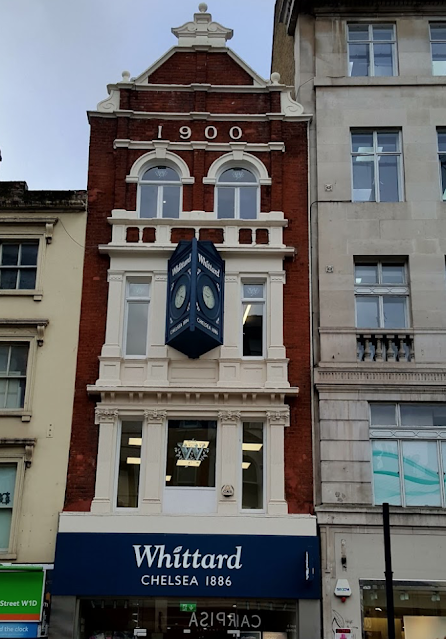
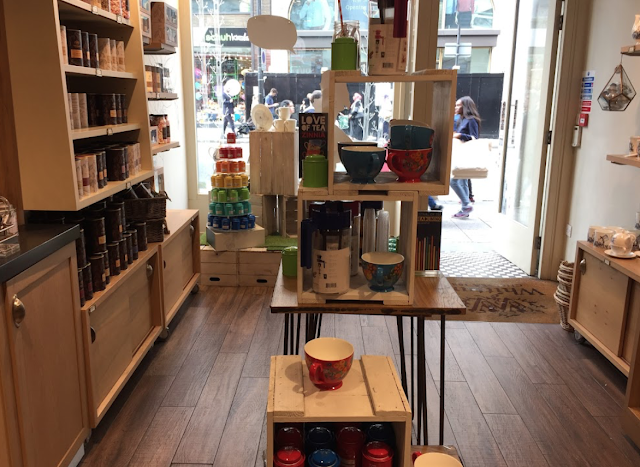



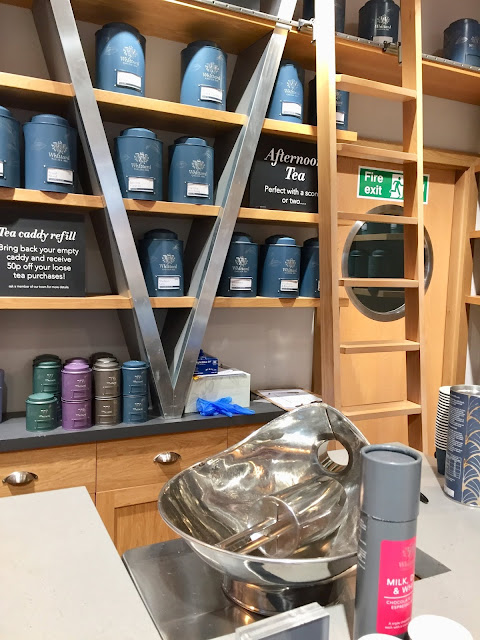









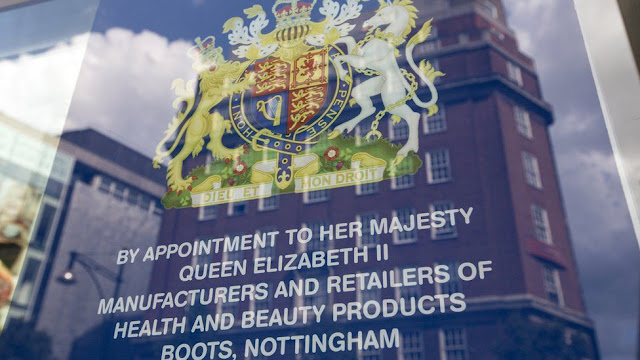
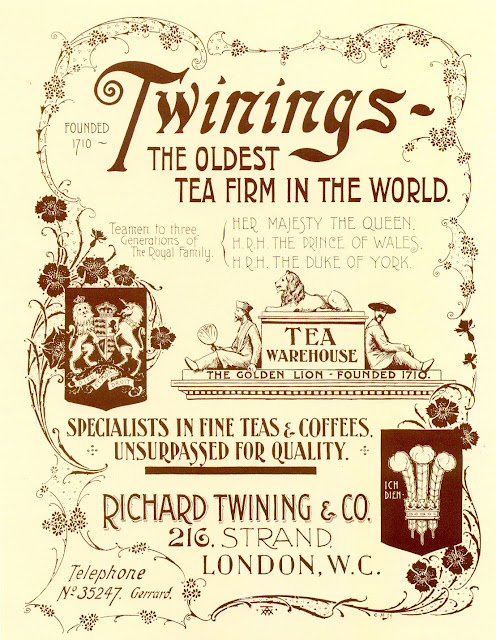








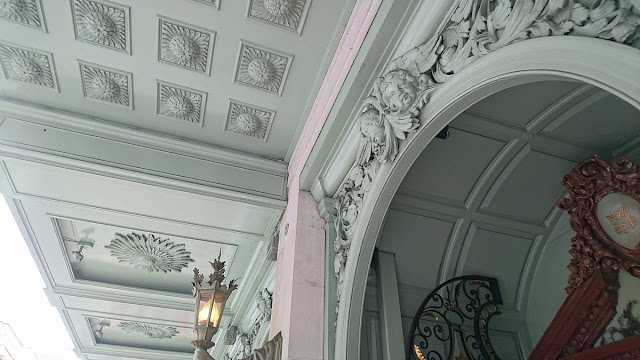






































































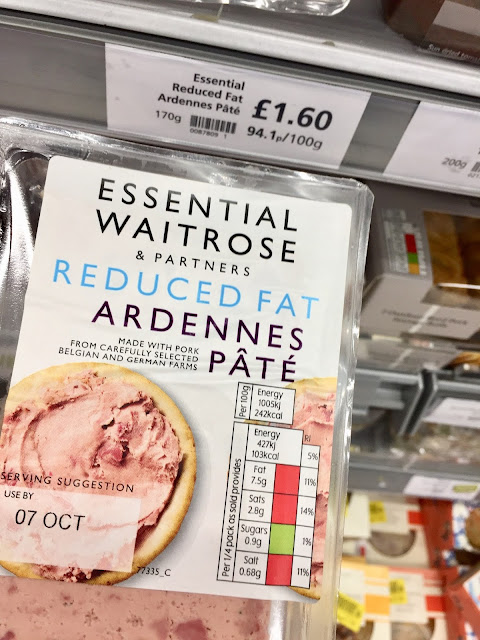


















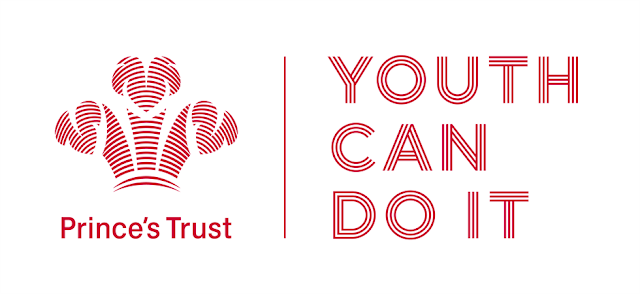



































































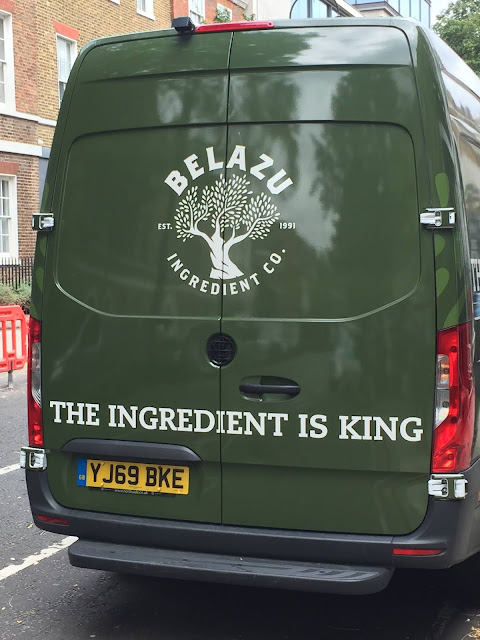



















































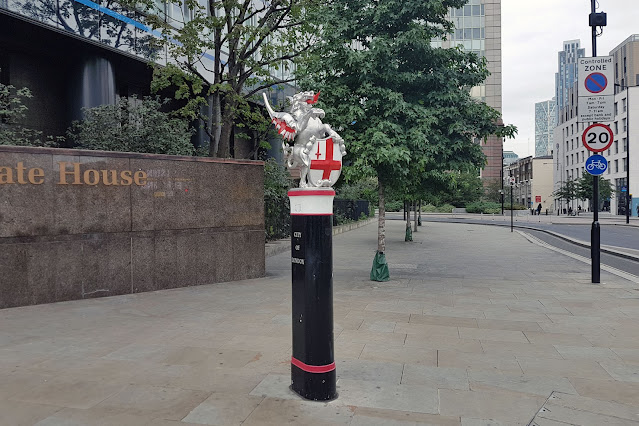
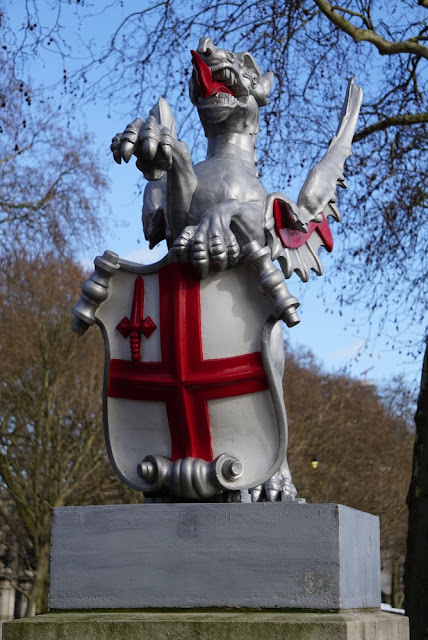



















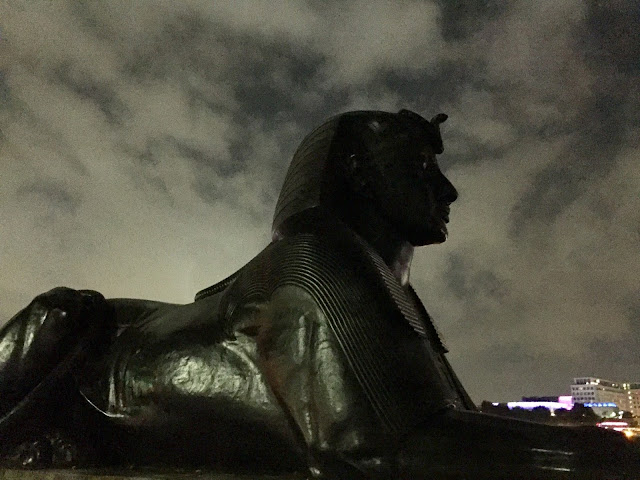












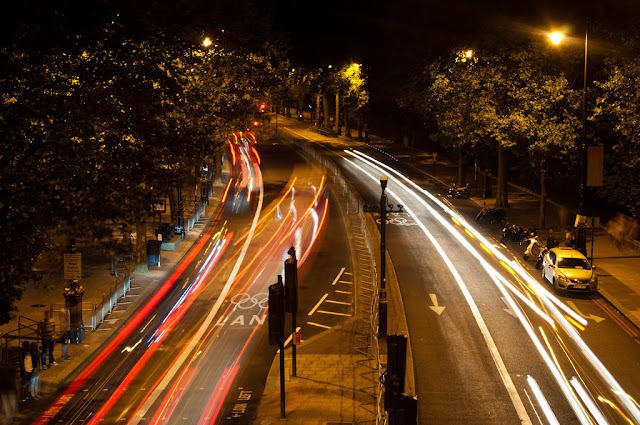
















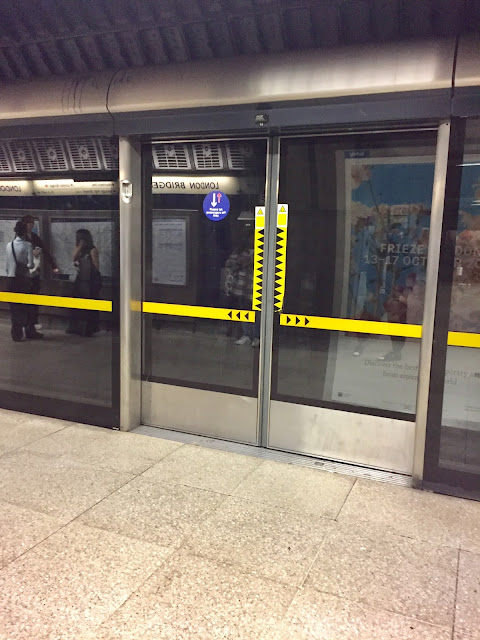






No comments:
Post a Comment
Don't be shy: leave your comments :)